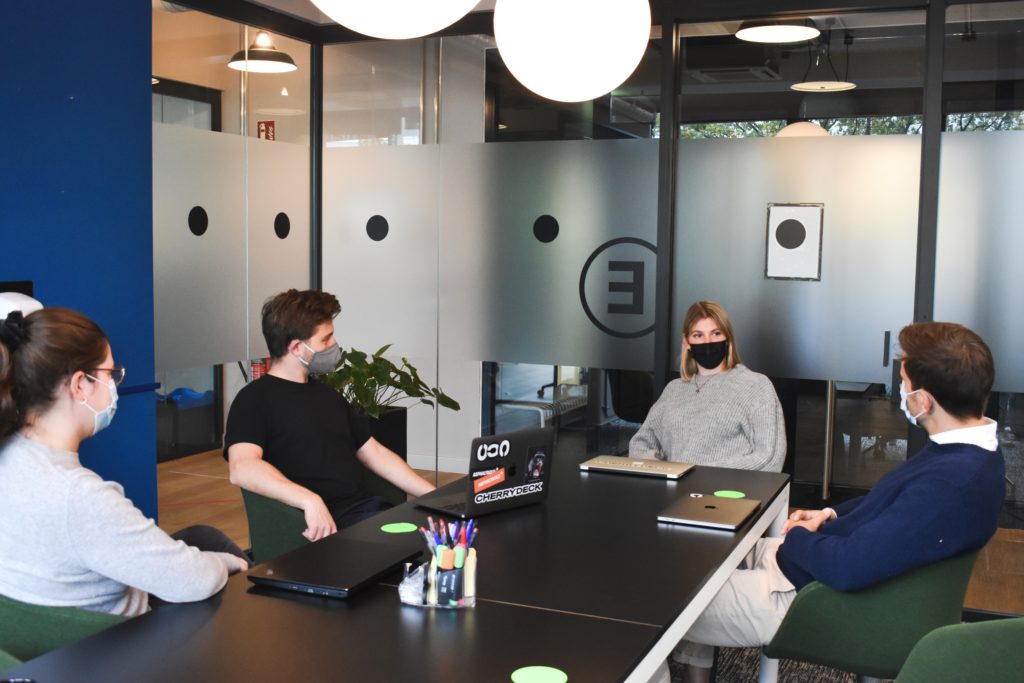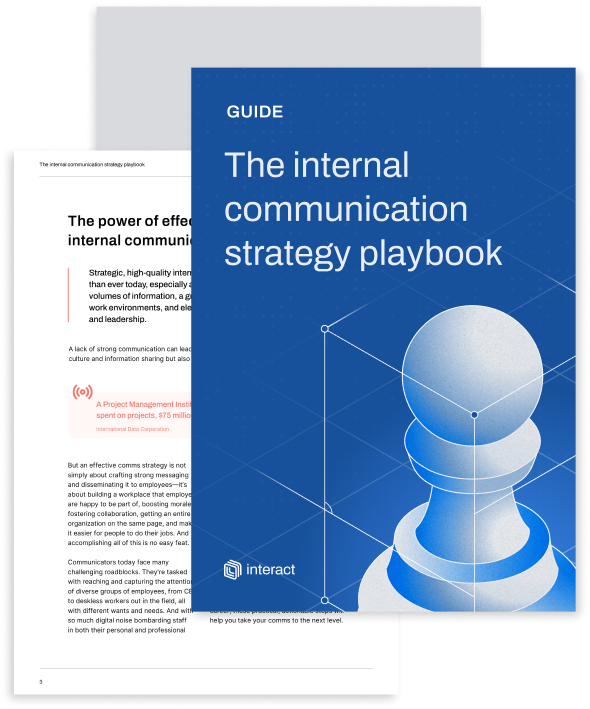Across the globe, the COVID-19 pandemic created an unsettling period for employees and organizations alike. With widespread remote working, internal communications software became the lifeblood for supporting employees and defining engagement within a business. With the popularity of hybrid working growing, it looks like it is here to stay for most. Intranet software is now a vital tool for companies to ensure that employees stay connected and collaborative, wherever they are working from.
Reopening and post-pandemic activity is happening at different speeds, as each country necessitates. As we try to emerge safely from lockdowns, there is much disparity in vaccine uptakes, infection rates, and ever-changing government mandates. This makes it harder for internal communicators at global enterprises to reach those cross-border. Strategies are made more complicated still by differing attitudes and needs from employees. Working from home has been a success for many, yet some want a return to the office. So, what does this mean for the employee experience? And how can an employee experience platform support the new normal of the hybrid workplace and increased employee choice?
Internal communication teams have navigated unprecedented times, through uncertainty and high levels of anxiety during the pandemic. But some internal communicators have seized the opportunity for change. It has allowed them to transform their comms strategy and delve into what their organization’s employee experience truly looks like. They have digitally transformed this vital functionality through the power of intranet software. Many have figured out the secret formula for driving communication and collaboration, even when everyone is working from different global locations. Employees have managed to remain productive, and senior leaders have been able to provide support, despite not operating from the same location.
Why does the employee experience matter?

Having a good employee experience has multiple far-reaching benefits. It improves job satisfaction, increases staff retention, and makes workers more productive. Employees feel like they matter and that they are a valued part of an organization. In this talent-hungry landscape, businesses often fight for the best and most relevant experience. Having a good workplace culture can genuinely set a business apart from its competitors.
A study by IBM found a clear link between a positive employee experience and a higher return on assets and sales. Those organizations in the top 25% reported nearly three times the return on assets. They also doubled the return on sales compared to those in the bottom quartile. This research proves that companies with an effective employee engagement strategy will see more return on investment and increased profitability than those that don’t. So, there is a clear business benefit to focusing on the employee experience, and that’s where intranet software can help.
14 steps to great internal communications
It’s crucial that employees feel like they have a voice in order to achieve positive collaboration and productivity. Whether operating virtually, in-person, globally, or in a smaller environment, the employee experience varies for all organizations. But one thing reigns true – ignoring it has serious consequences.
Responding to the demands of COVID

The pandemic has caused numerous workplace challenges for internal communications. For the first time ever, millions of teams transitioned to working from home rather than being predominantly office-based. Despite the upset of the past eighteen months, internal communicators have overcome significant hurdles. Professionals have cleverly used the tumultuous times to drive forward their own digitally transformed agendas.
These agendas have fixed communication issues and focused on flexibility with a more agile approach to office-based work. It has provided employees with the desired control and autonomy over their working location and hours. However, at the foundation of this change needs to be an awareness of the overall impact on workplace culture. There should be an assurance of strategies to bridge the disconnect.
For employees, having multiple options is key. Allowing those who don’t function as well at home to experience a more location-based employment structure, avoids feelings of isolation. Keeping workplace culture alive, despite new hybrid working strategies and a more spread-out workforce; this is where internal communications and intranet software come into their own. Technology can provide a buffer, to offer understanding and support when dealing with these newly emerging problems caused by the shift to hybrid working as a direct result of the pandemic.
This switch to remote working moved faster than anyone has seen in modern times. And managing the employee experience has become more critical than ever. For businesses to achieve long-term success, attract top industry talent, have a good handle on their internal and external brands, and many more benefits, the employee experience plays a significant part.
Here are our top 5 benefits to supporting the post-pandemic employee experience:
1) A tailored approach to flexibility

When it comes to the employee experience, flexibility is at the forefront of everyone’s mind. But there really isn’t a one-size-fits-all strategy for this. What would work in a typical office might not work for a healthcare environment, and that would be different again for a factory, for example. That’s why measuring your approach with intranet analytics can help tailor the response and ensure that internal communications are as optimized as possible for employees.
14 steps to great internal communications
Intranet analytics allows data to drive the decisions that can vastly impact the employee experience. It provides insight into performance and measures success through back-end metrics. Popular content can be identified and amplified, and areas that aren’t quite hitting the mark can be improved. It provides employees with the opportunity to connect to colleagues, which has proven to be crucial for workplace wellbeing. Utilizing this data successfully means that the challenges of hybrid work, such as communication between employees or a loss of company culture, are much less damaging than if they are not included in the internal communication strategy.
2) Listen to your employees

Employees want to feel like their employer has listened to them, and that builds trust. For any hybrid working strategy to be successful, there needs to be transparency, fairness, and a focus on wellbeing. Organizations should consider and investigate how their employees feel, rather than second-guessing. To do this, they need an effective listening strategy backed up by data.
Once this data has been gathered, that’s where Personas can help. Designing these personas allows classic organization structures to be a thing of the past, with dynamic user groups, defined by specific criteria. It means that employees can be communicated with in a relevant and impactful way through the intranet. With nuances for specific roles, the content posted on your intranet can become purposeful, and tailored to their needs. It creates a space that’s designed purely for employees to connect, innovate and collaborate.
3) Master the art of attraction and retention

Recruitment has changed in the eighteen months of the pandemic. There is now a huge demand for flexible and hybrid working. Some of the world’s largest recruitment companies have recently commented on a rise in global hiring and fierce competition for top talent.
A good employee experience and internal communications software have a definite impact on retention and recruitment. Work feels like part of something important, with a thriving culture, and employees know that their contributions actually matter. And when they think this way, they are much less likely to move on to another role. Intranet software, in general, makes an employer more attractive to job-seekers and can give the edge in the war for talent.
14 steps to great internal communications
With this high demand for talent spurred on by the pandemic, offering a superior employee experience does give a competitive advantage. Those that change jobs frequently and constantly move to new environments or teams struggle to stay connected with their workforce. But those that offer employees a compelling experience are much more likely to retain these staff and not have to join the endless fight for recruitment.
4) Collaborate and be social

Intranet software unites employees, encouraging them to communicate and offering an area where they can be social and creative. Whether based in one office or spread across several continents, the power of internal communications means that the intranet becomes a hive of creativity. It is an internal hub for employees to inform and share knowledge.
Using features like Communities brings people together virtually, it encourages engagement and collaboration with like-minded colleagues. For post-pandemic collaboration, social intranet features such as this are paramount, stimulating spontaneous idea-building. They bring your people together. Build virtual communities on your intranet for groups of common interest, where your employees can go to connect with colleagues.
5) Peer-to-peer recognition

Finally, one vital element of the employee experience is peer-to-peer recognition. Social rich features such as this make all the difference. It’s a fantastic way to celebrate progress, reward those who go the extra mile and demonstrate the preferred attitude of those in the organization.
Investing in this working style from the top down proves that the business rewards collaboration and knowledge sharing. It allows colleagues to acknowledge each other and the great work they’ve done, demonstrating that the intranet is not just a collaboration tool but a social formula that defines workplace culture. Intranets keep the employee experience alive – whether employees are working remotely or not. They improve collaboration and innovation, encouraging spontaneous brainstorming and providing the social tools necessary to work together, surrounding all workers with support and appreciation.


